Developing and maintaining a brand identity requires consistent messaging. One of the ways to achieve this is by leveraging Kapfere Brand Identity Prism to visualize your business. In this article, we introduce this concept and share several brand identity prism examples to give you a better idea of how they work. We will also recommend a one-stop tool that will help you build a brand identity prism for your company in a matter of minutes.
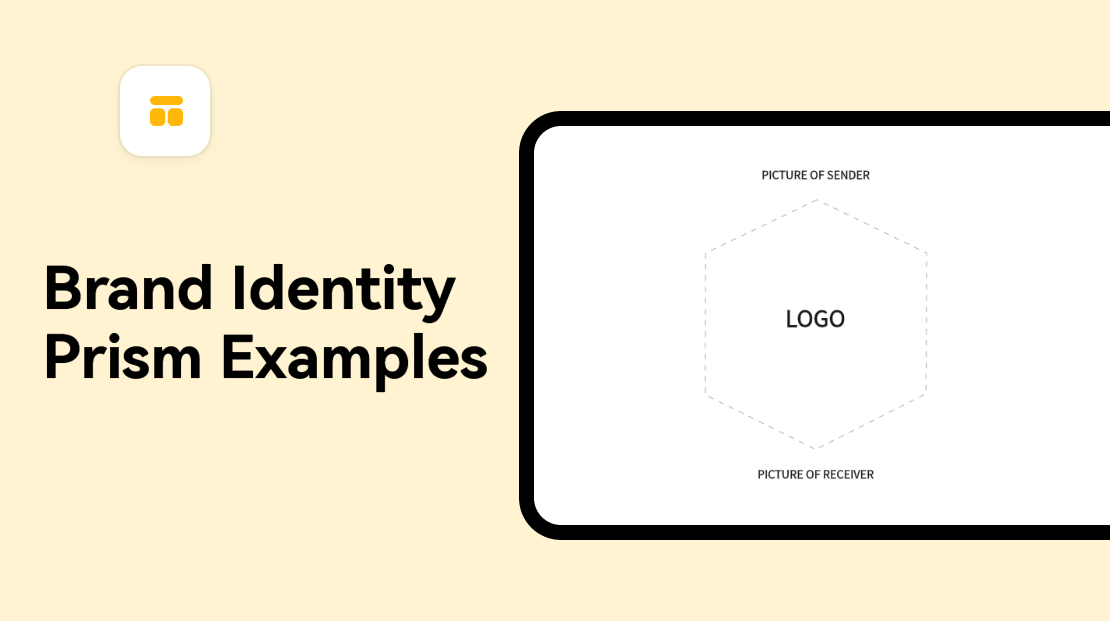
What Is the Brand Identity Prism
Kapferer’s Brand Identity Prism is a well-known marketing model, comprising a hexagonal prism of six key elements of a brand identity. The concept was developed by a professor of marketing strategy, Jean-Noel Kapferer in 1986. It helps to visualize how a brand is expressed through various facets, beyond its logo and other visual design materials.
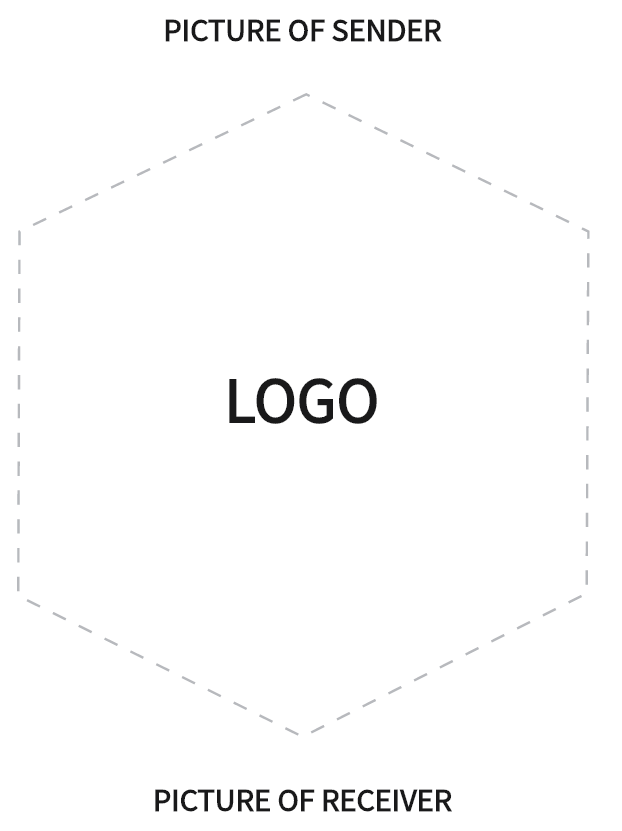
Components of Kapferer Brand Identity Prism
Before we explore a few brand identity prism examples, let’s first understand the components of this framework. The six components of the Kapferer Brand Identity Prism come together to form the brand’s narrative. They include:
- Physique: This is the physical attributes of a brand’s image, and it is everything that comes to your customer's minds when they visually perceive your brand. They include attributes such as logos, colors, product design, and packaging materials.
- Personality: This is the way customers would describe your brand. You can determine the brand’s personality by listing the traits that customers believe it would have if it were a person. Examples include hardworking, joyful, or dedicated.
- Culture: This is the internal identity of a brand, and includes aspects such as the origin story, purpose, beliefs, and values that comprise its culture. The easiest way to learn about a brand’s culture is to speak to employees about their daily experiences within the company. You can also look at how the company acts on its values or fulfills its mission statement.
- Relationship: This characterizes the brand’s interactions with its customers, including logistical factors like the products and services it supplies. It may also involve more abstract concepts, like the kind of interactions customers like and what they have learned about the brand.
- Self-Image: This is a metric used to determine how the customers of the brand visualize their ideal selves, and the way the brand attempts to reach those goals. The brand may use marketing campaigns to evoke certain aspects of a customer’s ideal self by framing its products. For instance, a high-end clothing company may set up extravagant advertising campaigns that promote the idea that its clothing helps customers live a more luxurious life.
- Reflection: This is the way the brand portrays its target audience in its marketing and advertising efforts. It usually involves the brand using its idealized version of customers with a focus on how it believes they look, feel, and act. For instance, the brand may portray its customers as being happy and carefree.
8 Brand Prism Examples
The identity of a brand is unique across companies and affects how customers perceive the company. In the following section, we look at some Kapferer Brand Identity Prism examples to give a better idea of how the model works:
Brand Identity Prism Example – Hermès
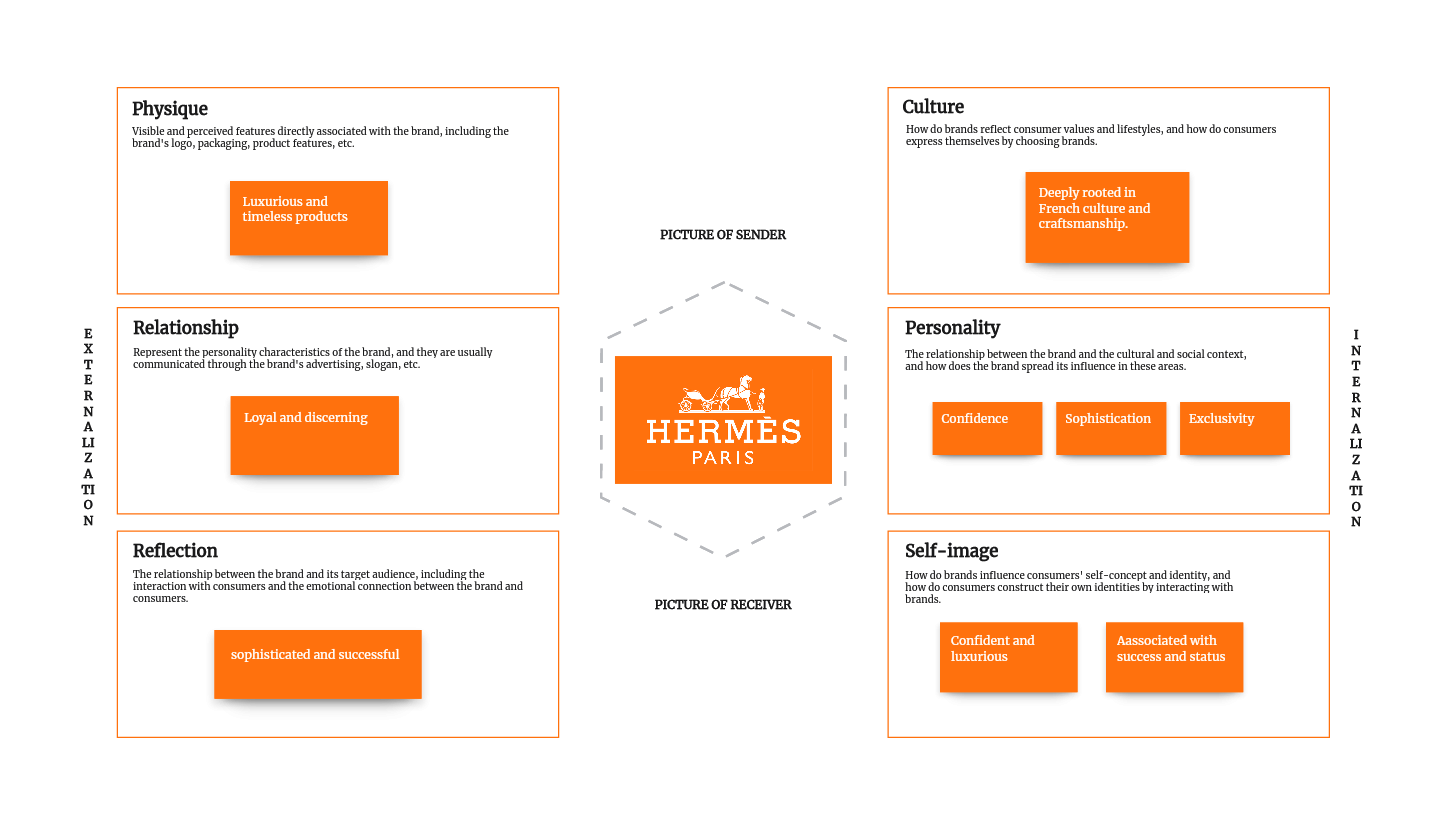
- Physique: Hermès is known for its luxurious and timeless products.
- Personality: Exudes confidence, sophistication, and exclusivity.
- Culture: Deeply rooted in French culture and craftsmanship.
- Relationship: Customers are loyal and discerning as they appreciate the brand's commitment to quality.
- Reflection: Customers see themselves as sophisticated and successful, using the brand’s products to express their unique style.
- Self-Image: Helps its customers to feel confident and luxurious by offering products that are associated with success and status.
Brand Identity Prism Example – Chanel
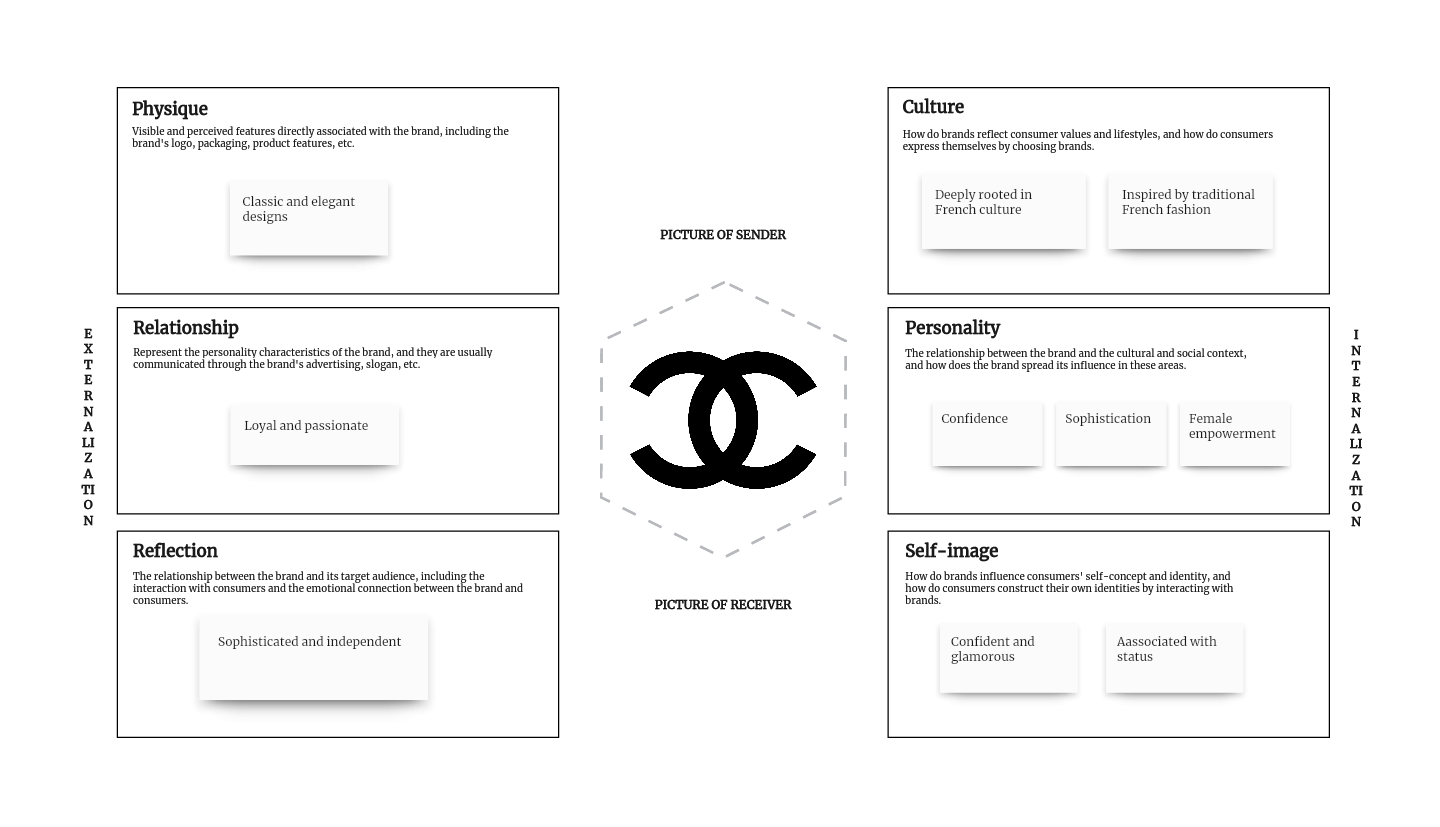
- Physique: Chanel is known for its classic and elegant designs, with simple and often understated products.
- Personality: Exudes confidence and sophistication of female empowerment.
- Culture: Deeply rooted in French culture, and most of its products are inspired by traditional French fashion.
- Relationship: Customers are loyal and passionate about Chanel’s commitment to quality.
- Reflection: Customers see themselves as sophisticated and independent, interested in Chanel’s unique style
- Self-Image: Helps its customers to feel confident and glamorous by offering products that are associated with status.
Brand Identity Prism Example - Ralph Lauren
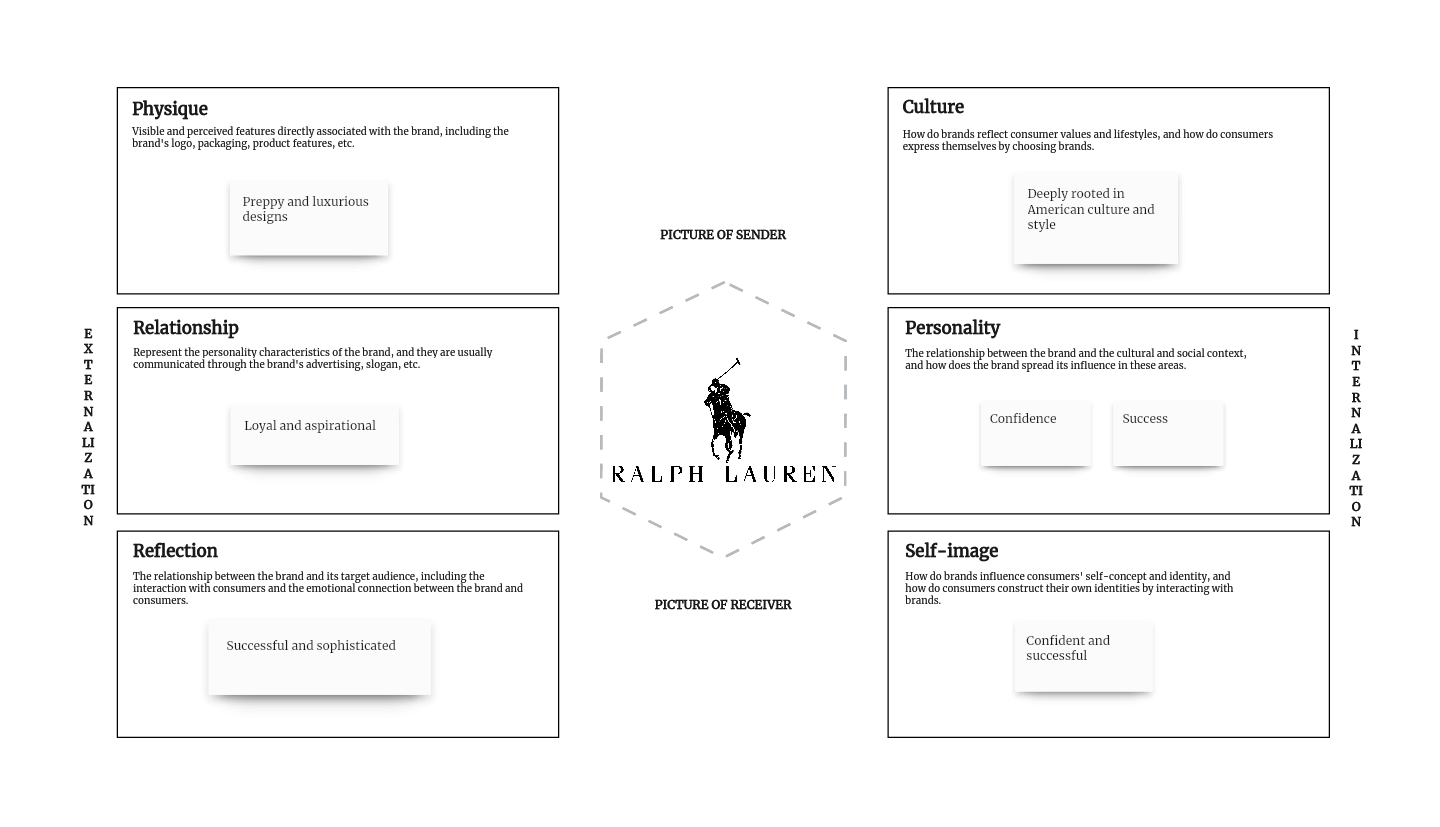
- Physique: Ralph Lauren is known for its preppy and luxurious designs.
- Personality: Exudes confidence and success in quality products.
- Culture: Deeply rooted in American culture and style.
- Relationship: Customers are loyal and aspirational.
- Reflection: Customers see themselves as successful and sophisticated, wanting products that stand out.
- Self-Image: Helps customers to feel confident and successful in their choice of products.
Brand Prism Example - Levi's
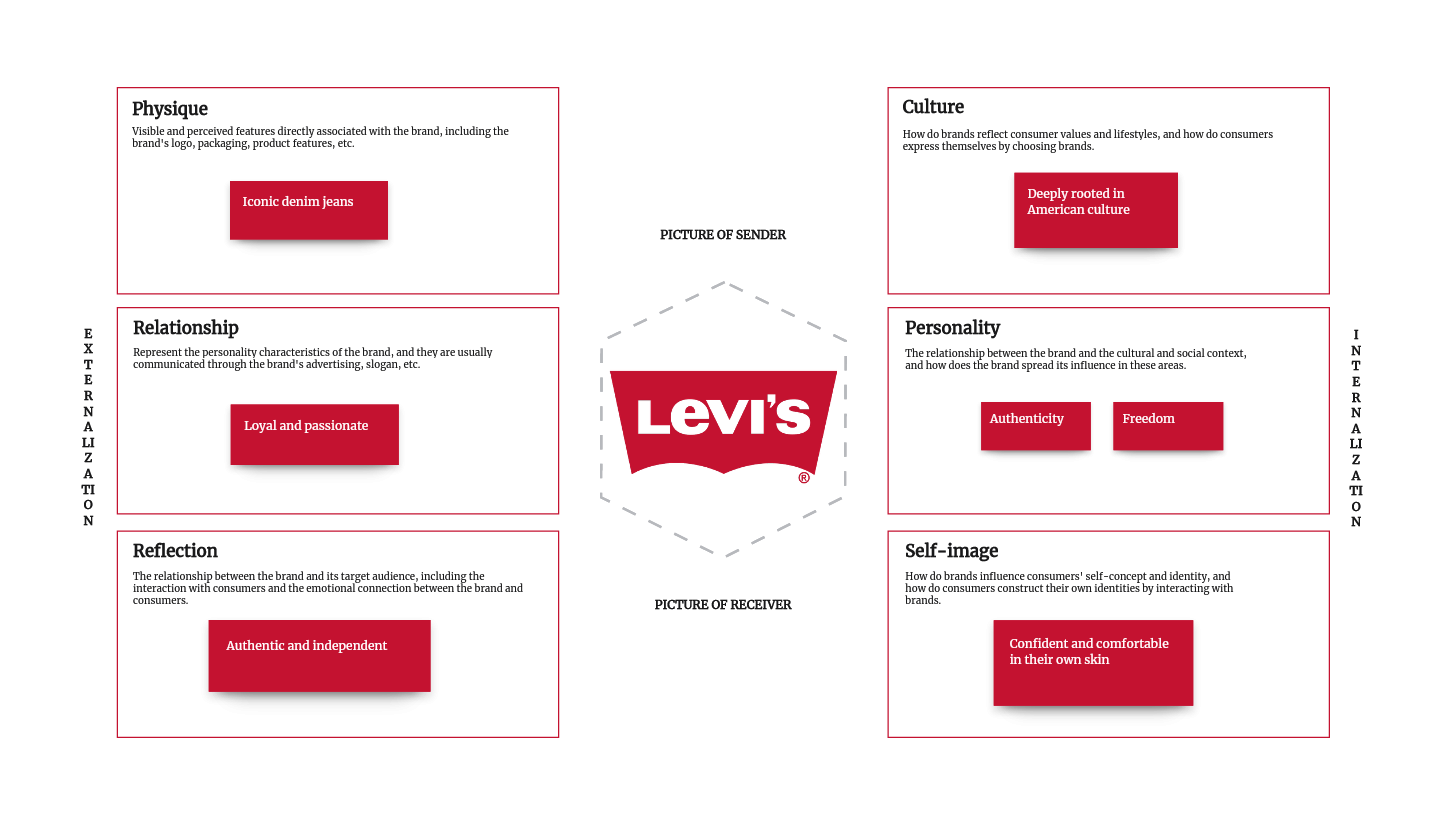
- Physique: Levi's is known for its iconic denim jeans.
- Personality: Exudes authenticity and freedom by offering products that show a spirit of rebellion and anti-establishment.
- Culture: Deeply rooted in American culture where jeans have traditionally been seen as a symbol of the American West.
- Relationship: Customers are loyal and passionate, appreciating Levi’s commitment to quality and authenticity.
- Reflection: Customers see themselves as authentic and independent, looking for products that help express their unique style and personality.
- Self-Image: Helps customers feel confident and comfortable in their skin.
Brand Prism Example – Nike
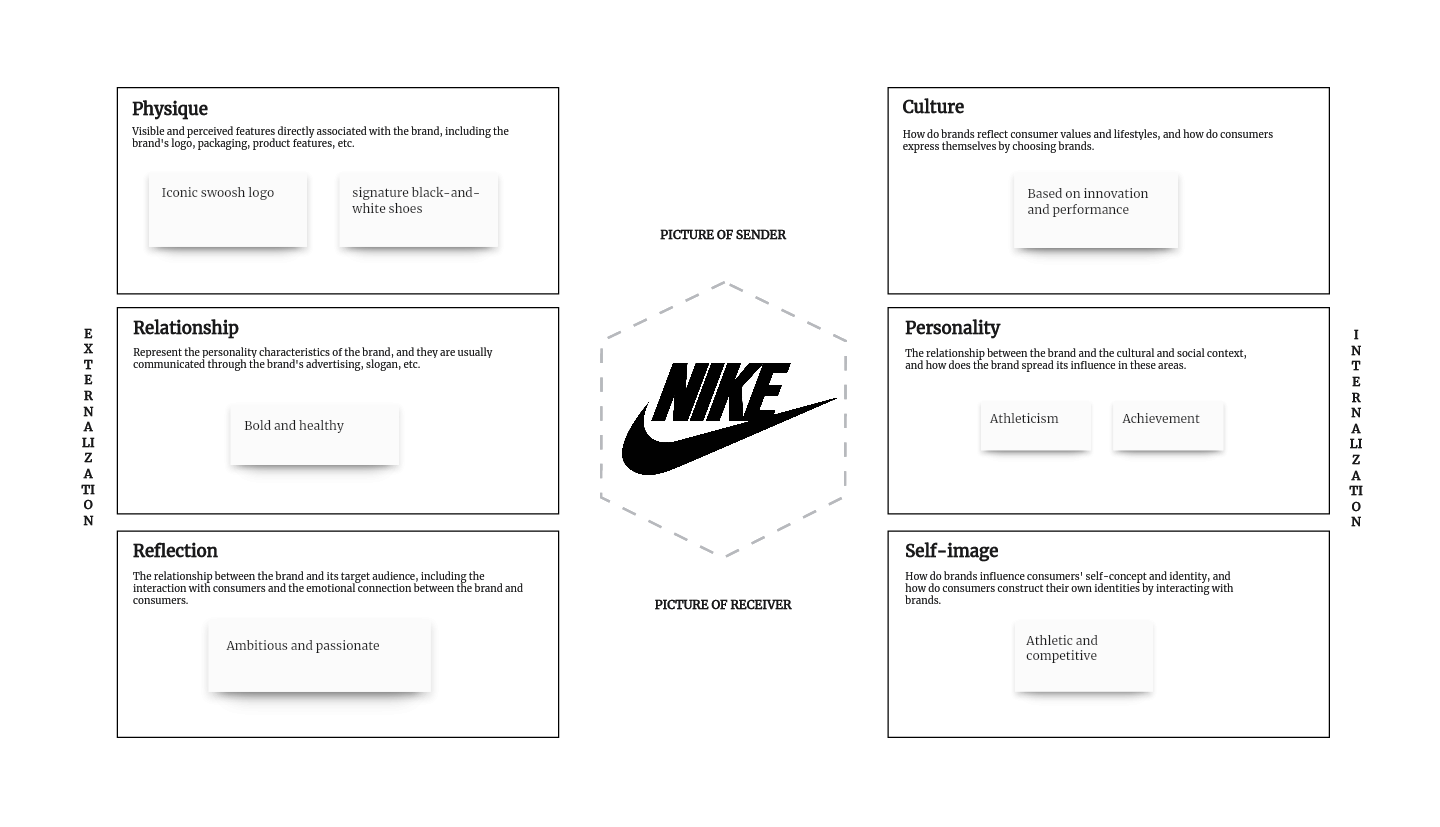
- Physique: Nike is known for its iconic swoosh logo and signature black-and-white shoes.
- Personality: Associated with athleticism and achievement by encouraging people to push themselves to the limits.
- Culture: Based on innovation and performance in producing durable shoes.
- Relationship: Maintains a close relationship with its consumers by encouraging them to share their own experiences with the shoes.
- Reflection: Nike consumers are ambitious and passionate about pursuing their goals.
- Self-Image: Nike consumers see themselves as being athletic and competitive in need of performance shoes.
Brand Prism Example – Dove
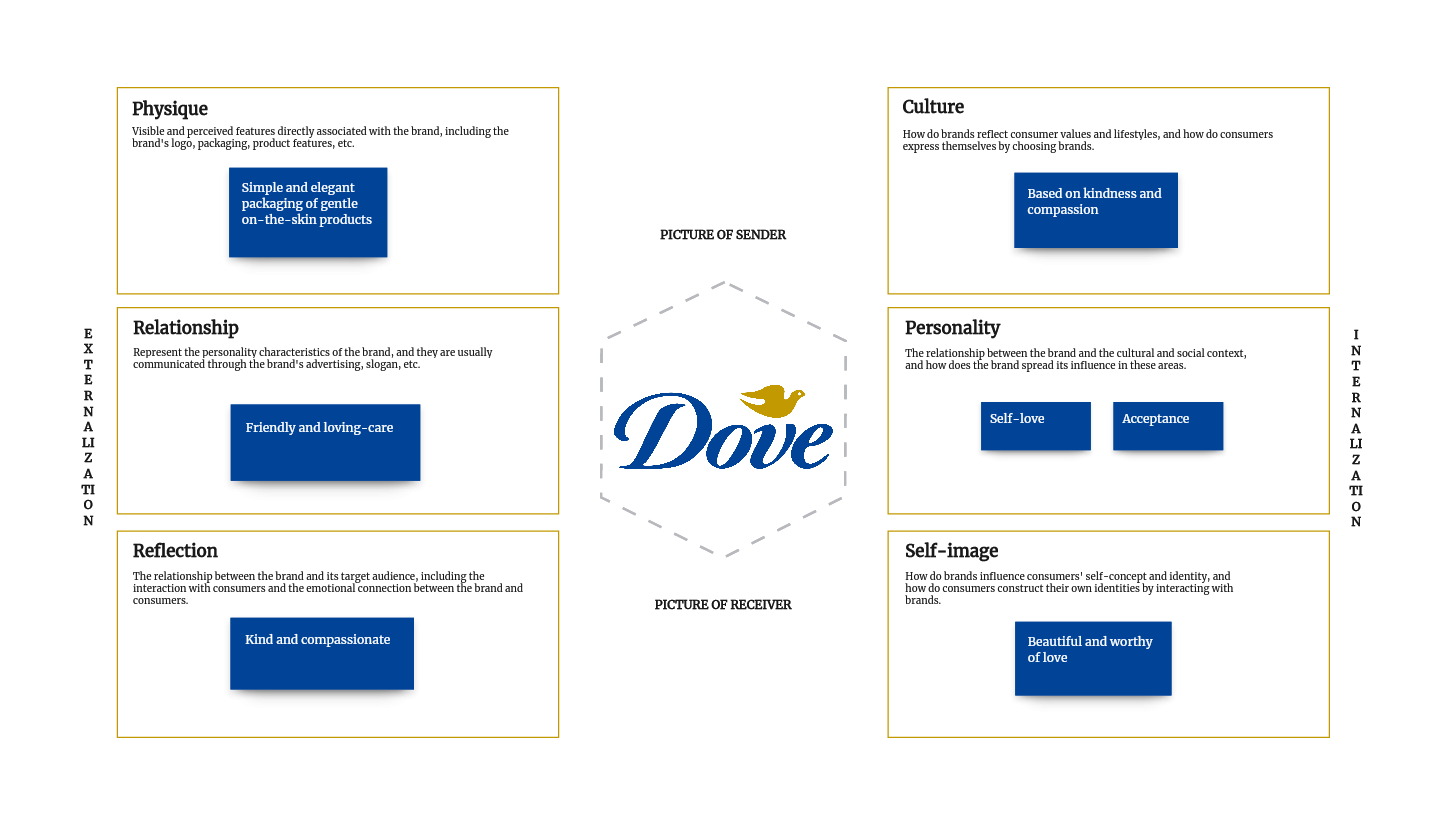
- Physique: Dove is known for its simple and elegant packaging of gentle on-the-skin products.
- Personality: Associated with self-love and acceptance by offering user-friendly products.
- Culture: Based on kindness and compassion.
- Relationship: Maintains close relationships with its consumers by interacting with them on social media.
- Reflection: Consumers are kind and compassionate.
- Self-Image: Consumers see themselves as being beautiful and worthy of love.
Kapferer Brand Identity Prism Example - L'Oréal
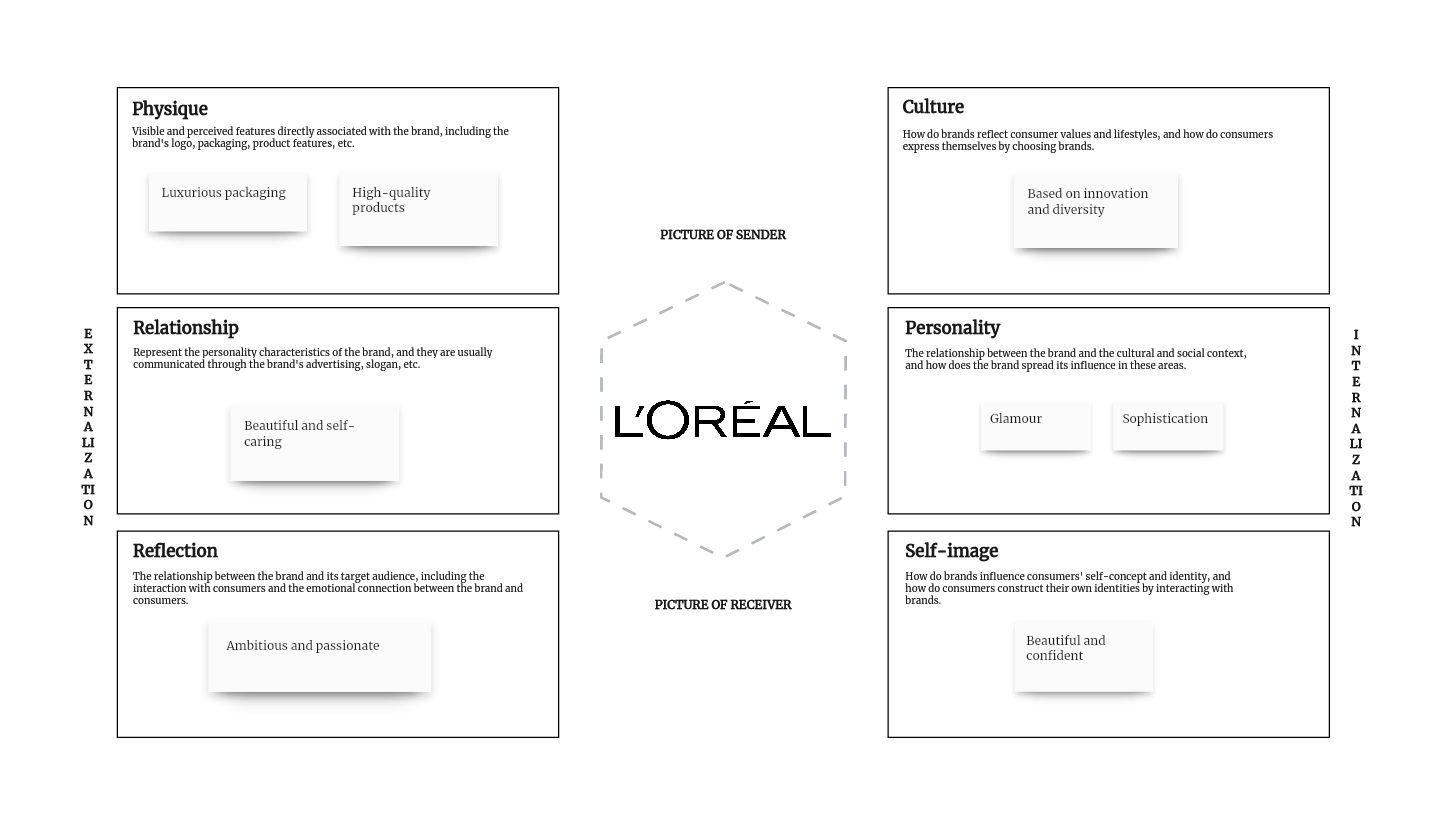
- Physique: L'Oréal is known for the luxurious packaging of its high-quality products.
- Personality: Associated with glamour and sophistication.
- Culture: Based on innovation and diversity by introducing improved products.
- Relationship: Maintains close relationships with its consumers on both social media and the real world.
- Reflection: Consumers are ambitious and passionate about beauty products.
- Self-Image: Consumers see themselves as being beautiful and confident in themselves.
Kapferer Brand Identity Prism Example – Starbucks
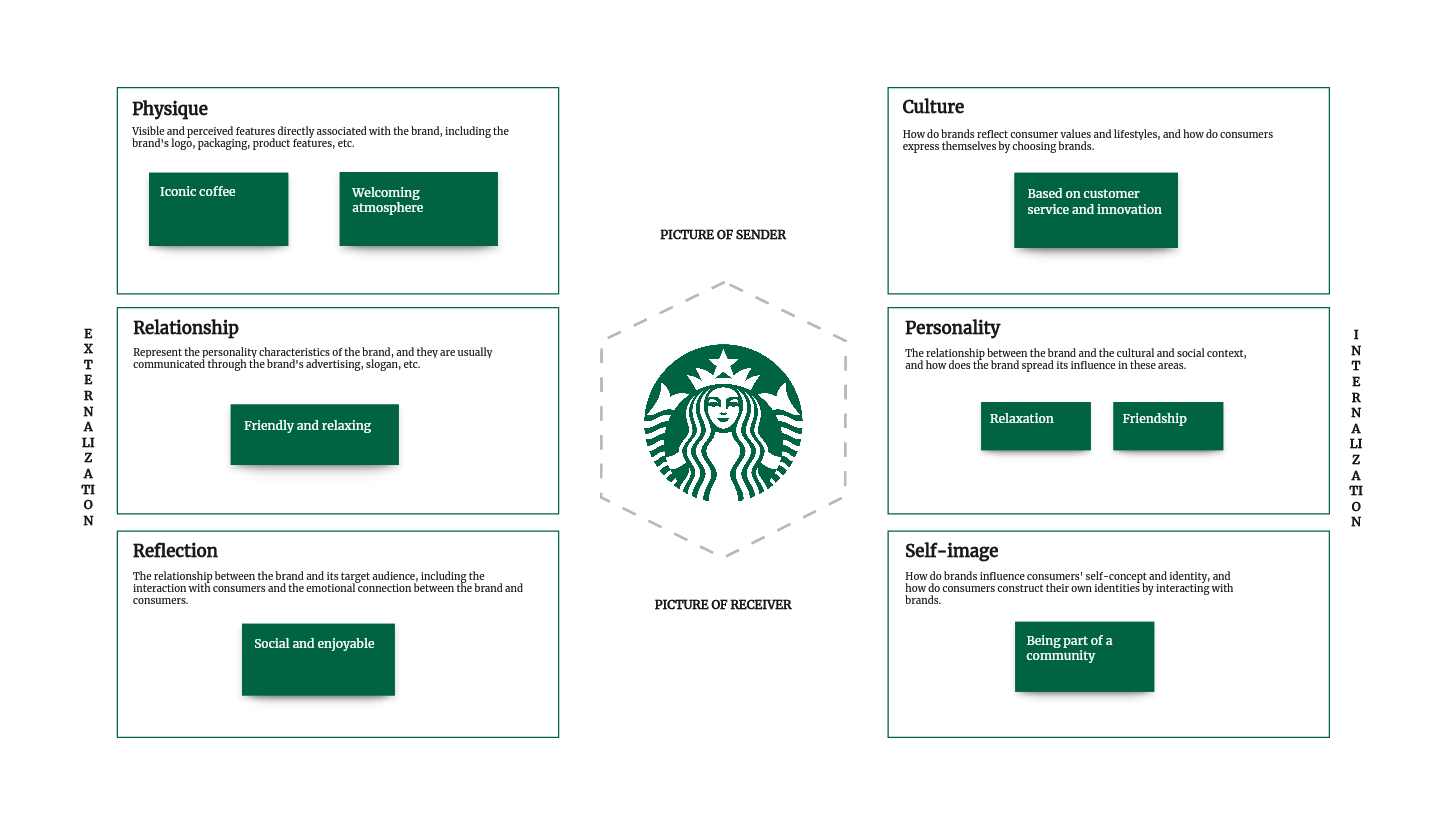
- Physique: Starbucks is known for its iconic coffee and welcoming atmosphere with comfortable seating and free Wi-Fi.
- Personality: Associated with community and indulgence where people relax while enjoying a cup of coffee.
- Culture: Based on customer service and innovation.
- Relationship: Maintains close relationships with its consumers by encouraging them to become partners in the Starbucks community.
- Reflection: Consumers are social and enjoy a good cup of coffee.
- Self-Image: Consumers see themselves as being part of a community.
Key Takeaway: A Brand Identity Prism Template and a One-stop Tool
The Brand Identity Prism describes the identity of a brand through its characteristics. With the strongest having all the six elements together in a seamless cohesive identity and message, this model can indicate the direction a company is headed. Boardmix offers a ready-to-use Brand Identity Prism template that will help you create a complete diagram for your company in no time. Simply download the Boardmix template and start having a clear visual understanding of your band.

Steps to Use Brand Identity Prism Template on Boardmix
To use the Brand Identity Prism Template, you can navigate to the workspace of Boardmix, an online whiteboard that provides various free templates. This step-by-step guide will help you use the Brand Identity Prism template effectively to streamline your drawing process.
Step 1: Log in to Your Boardmix Account
To get started, log into your Boardmix account using your credentials. If you're new to Boardmix, create an account by following their easy sign-up process.

Step 2: Search and Choose Brand Identity Prism Template
Once you've logged in, navigate to the 'Templates' section available on the platform's main page. Here, you'll find a plethora of ready-to-use templates categorized under various topics, use the search bar for a quicker find.

Step 3: Customize and Edit Your Brand Identity Prism Diagram
After selecting the template, it will open in a new Boardmix workspace. Boardmix gives you complete freedom to customize it as per your unique needs. You can:
- Add or delete sections: Click on an existing section and hit the 'Delete' button on your keyboard to remove it. To add new sections or fields, select the 'Text' option from the toolbar and click on the board where you wish to add content.
- Modify text: To edit any text, click on it to open the text box and make your changes.
- Change visual elements: Boardmix allows you to modify colors, fonts, or border styles. These visual elements can be tailored to match your own needs.
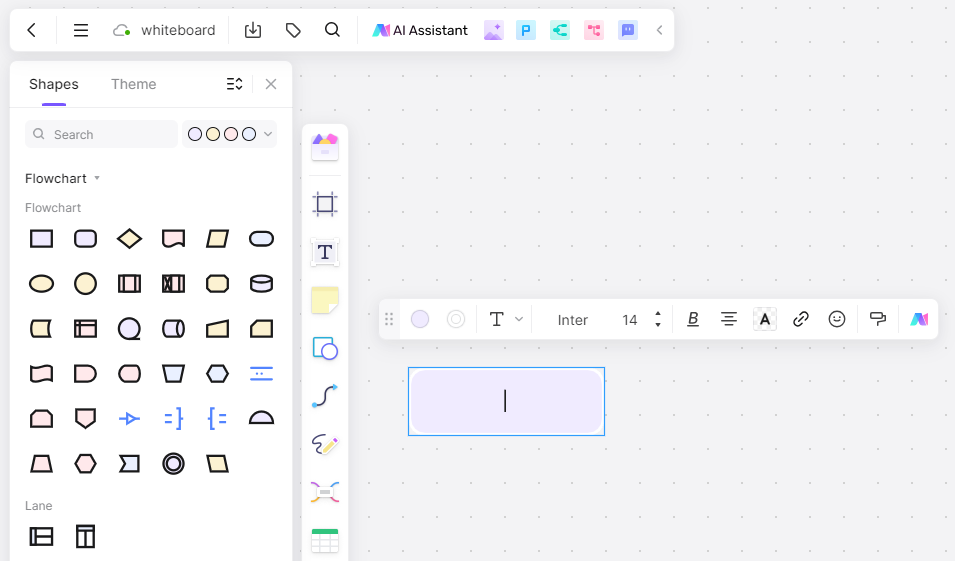
Step 4: Save Your Work, Share and Collaborate
Boardmix will save your work online anytime. Once you have customized the template to your satisfaction, you can then share it with other members for collaboration.
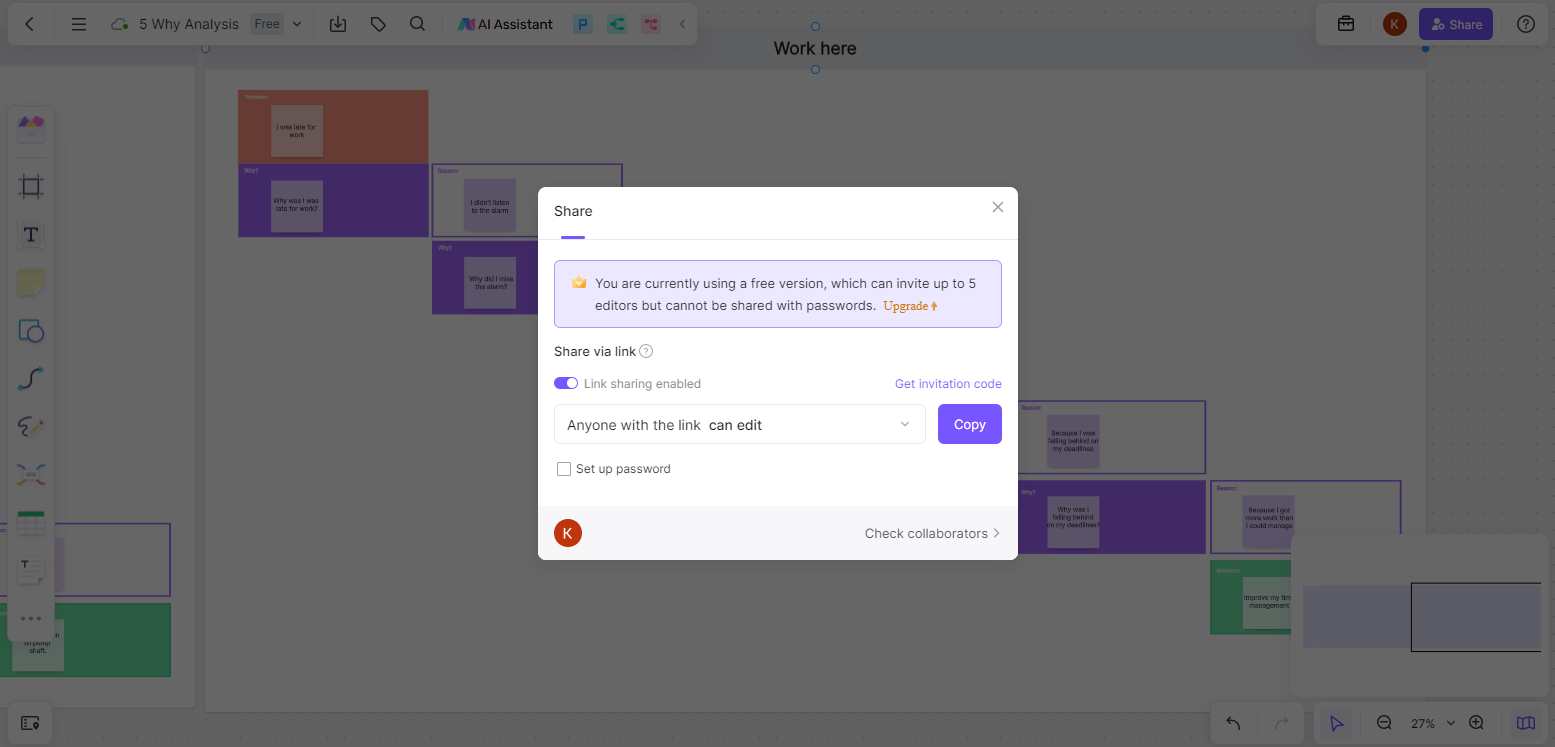
Boardmix's collaboration feature allows multiple people to view and edit the feedback form simultaneously in real time. All data is stored safely on Boardmix, making it a reliable tool for maintaining records over time. Get started and try it for free now!













